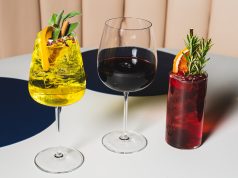
In late March, two couples filed a class-action lawsuit in California alleging that some of the nation’s top-selling low-cost wines contain unsafe levels of arsenic. “Just a glass or two” of wine from producers like Cupcake, Charles Shaw, Franzia, Rex Goliath and Korbel “could result in dangerous arsenic toxicity,” according to the suit.
Many media outlets jumped on the story. CNN asked, “Should you be worried about arsenic in California wine?” Local CBS affiliates terrified viewers with breathtaking stories about “high levels of deadly arsenic.” But the coverage was grossly overblown.
For starters, the plaintiff ’s analysis considered the EPA’s standard for arsenic in drinking water. If your Franzia consumption rivals your water consumption, you have bigger concerns than arsenic. Plus, as the Wine Institute, a trade group representing California wineries, explained, “arsenic is prevalent in the natural environment in air, soil and water… [so] wines from throughout the world contain trace amounts.”
So consumers should rest easy; winemakers aren’t topping up their tanks with the toxin. But the collective freak-out demonstrates that consumers are starting to pay attention to what’s in their wine. That’s worth celebrating.
Everyone can envision the romantic ideal of winemaking. Next to a picturesque vineyard, farmers tread grapes with their feet in ancient oak barrels. Thanks to ambient yeasts, that juice turns into delicious wine. But in the United States, more than 70 “materials” are “authorized for [the] treatment of wine.”
That oaky aroma? With inexpensive wines, it probably isn’t from barrels, but from oak chips and sawdust. The juiciness is probably from acid additions. The weight and texture of inexpensive wine could be from concentrates with names like “MegaPurple” and “UltraRed.” As Washington Post wine writer Dave McIntyre once wrote, “today’s winemakers are as likely to wear white lab coats as they are tattered overalls and muddy boots.”
There isn’t any evidence that these additives pose a health risk. But if they give you the heebie jeebies, you aren’t alone.
After all, Americans are beginning to take serious interest in where their food comes from. At grocery stores and farmers’ markets, consumers are moving away from industrialized calories, even if it means paying more. Logic dictates that if consumers are going to seek out cage-free eggs and free-range chicken, they’ll eventually seek out wine from vintners who are thoughtful and transparent about production.
Wine consumers aren’t there yet. But we’re well on our way.
This past Sunday, I visited a hamburger joint. With a heaping side of french fries, I devoured a burger topped with pimento cheese, a fried green tomato, cajun mayonnaise and loads of ketchup. It was awesome. But as much as I enjoy pigging out on fast food, I try to keep such meals to a minimum. My health consciousness demands it.
In the optimistic future of American wine, well-informed consumers will view cheap, mass-market wine with the same skepticism. An occasional splurge, perhaps. But not something to drink daily.
David White is the founder and editor of terroirist.com, which was named “Best Overall Wine Blog” at the 2013 Wine Blog Awards. His columns are housed at Grape Collective.














